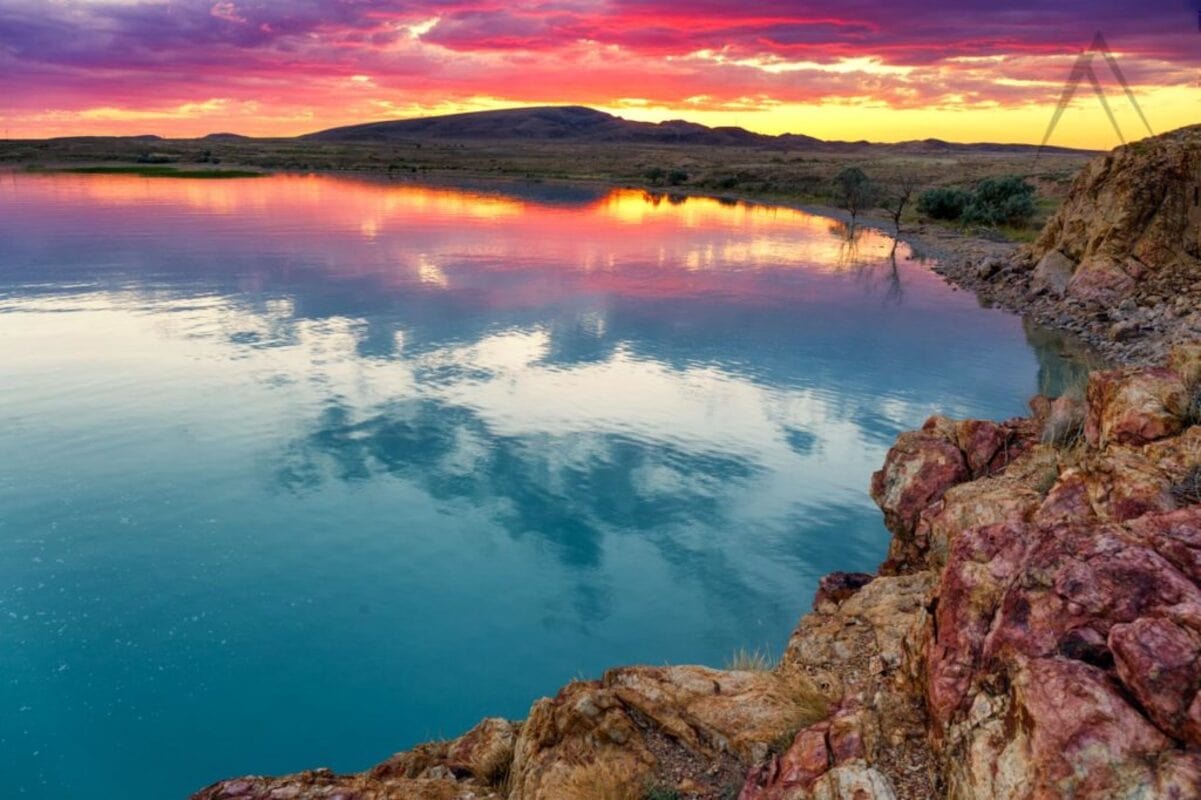Lake Balkhash is one of the most unique and mysterious lakes in the world, located in the heart of Central Asia. This body of water impresses with its natural beauty, rich biodiversity, and an extraordinary history that stretches back thousands of years. For many, Balkhash is associated with breathtaking landscapes, unusual structure, and enigmatic natural phenomena. Interesting facts about this lake will captivate anyone curious about the wonders of our planet. If you want to discover what truly makes Lake Balkhash so special, the following collection of fascinating facts will surprise you.
- Lake Balkhash is one of the largest lakes in the world, with an area that ranges from 15,000 to 18,000 square kilometers depending on the water level. It ranks as the eighth largest endorheic (closed basin) lake in the world. Its immense size often earns it the nickname of a sea.
- The lake has a remarkable characteristic: the western part contains fresh water, while the eastern part is saline. This is due to a narrow strait about 3.5 kilometers wide that separates the two different water bodies within the same lake.
- The depth of Lake Balkhash varies greatly in different places. The maximum depth is only about 26 meters, while the average depth is around 6 meters. As a result, many areas of the lake are very shallow.
- Lake Balkhash does not have a single large source of inflow, but the main supply of water comes from the Ili River. During periods of drought, the water level in the lake can drop significantly.
- The area surrounding the lake consists of salt marshes, steppes, and deserts, with the lake itself situated between the Central Asian Plain and the Dzungarian Alatau mountains.
- The lake is rich in fish species. In Balkhash, you can find Balkhash perch, marinka, pikeperch, carp, catfish, pike, perch, as well as exotic species introduced by humans.
- Balkhash is an important stop for migratory birds. Every year, thousands of ducks, geese, swans, cranes, and rare species such as flamingos and white-tailed eagles visit the lake.
- On the lake’s shore is the city of Balkhash, established in the early 20th century following the discovery of copper deposits and the construction of a metallurgical plant.
- The water in different parts of the lake is sharply contrasted in color. The freshwater area often appears blue or turquoise, while the saline part can seem gray or greenish due to the presence of microorganisms.
- The average water temperature in summer reaches 24–28 degrees Celsius, and in winter the lake is covered by ice up to half a meter thick. However, in some spots the ice may be thin or even absent due to underwater springs.
- Lake Balkhash is the remnant of a vast ancient body of water that existed in what is now Kazakhstan more than 10,000 years ago. In ancient times, this region had a much wetter climate.
- Periodic blooms of blue-green algae occur in the lake, sometimes changing the color and transparency of the water. This is a natural phenomenon seen in many large lakes.
- Lake Balkhash is one of the few lakes in the world where you can see a variety of boats: fishing vessels, cargo barges, and small pleasure boats for tourists.
- The lake plays a vital role in irrigating the surrounding farmlands, as its water nourishes vast fields, orchards, and melon plantations.
- Balkhash is frequently mentioned in Kazakh epic poetry and folk songs. Its shores are wrapped in legends about hidden treasures and tragic love stories, adding to the lake’s special charm.
- In the 1940s, Lake Balkhash was used for experiments with military technology and different types of vessels. The remote location provided ideal conditions for secret tests.
- Researchers believe the lake faces a constant threat of shrinking due to increased use of Ili River water for irrigation and industry, as well as climate change affecting precipitation in the region.
- In the 1960s and 1970s, Balkhash became a popular site for ecological expeditions studying the impact of human activity on Central Asia’s large water bodies. Some of the first documented cases of human-induced environmental problems at lakes were described here.
- The water in Lake Balkhash has a unique mineral composition, said to benefit the skin. Many local residents use the water for health and therapeutic purposes.
- The lake is a place of contrasts: arid hot steppe and cool water surface, a modern city and wild nature, industry and unique ecosystems coexist here.
- Balkhash is one of the few lakes that can be seen from space with the naked eye. Its distinctive shape and light-colored shores are easily recognizable in satellite images.
- Another amazing feature is that traces of ancient human activity have been discovered on the lake’s bottom and along its shores. Archaeologists have found remains of settlements, tools, and ritual items dating back several thousand years.
- In the twentieth century, Lake Balkhash attracted scientists from many countries who studied changes in water levels, bottom structure, chemical composition, and the lake’s biodiversity.
- In addition to fish, the lake is home to various crustaceans, mollusks, and rare algae species that have adapted to the changing environment.
- Occasionally, rare natural phenomena can be observed on the lake, such as waterspouts, massive fish shoals, and unusual colored clouds reflected on the water’s surface, creating breathtaking landscapes.
There are many more interesting facts about Balkhash, each one revealing a new side of this extraordinary lake. Such fascinating details help us understand the importance of preserving natural heritage, which is a true treasure for humanity. Lake Balkhash remains a source of inspiration for travelers, scientists, and all who appreciate the beauty of wild nature. These captivating facts about Balkhash prove that even in the driest corners of the planet, you can find a true wonder of nature.





